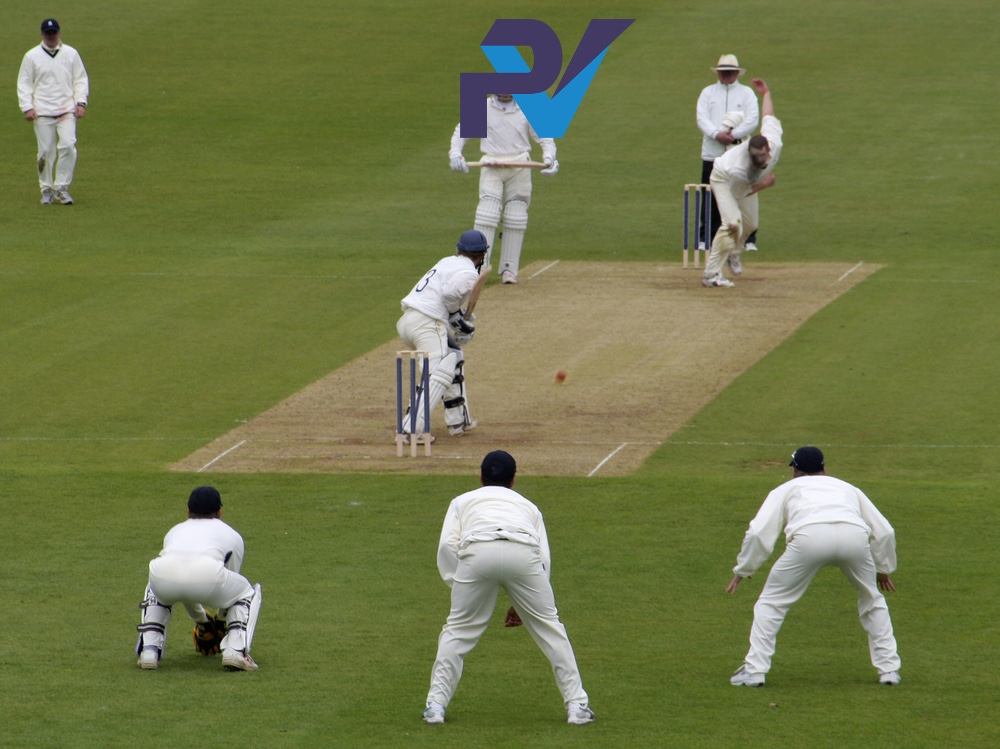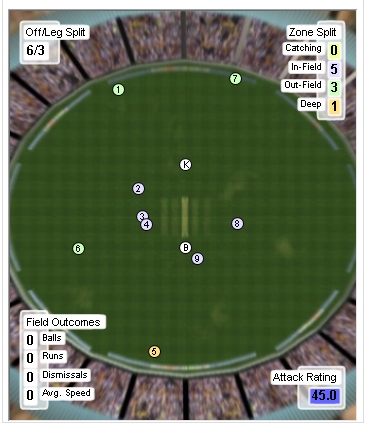Bowling Tactics: How to "Bowl Dry"
 Frustration: An underrated way to get wickets, and enormously effective at any level. In recent years, this has been called “squeezing” or “bowling dry”.
Frustration: An underrated way to get wickets, and enormously effective at any level. In recent years, this has been called “squeezing” or “bowling dry”.
How do you bowl dry this way?
The key is simplicity. You bowl outside off stump and set a strong off side field. This prevents batsmen from scoring, increases frustration and forces an error.
But as with all simple plans, it’s difficult to put into action. Here’s how to avoid the problems and make the plan a success.
When to use dry bowling
In all forms of cricket, one of the best tactics is to bowl at the top of off stump and hope for some lateral movement off the pitch or in the air. It’s time tested. It works.
Bowling dry is a flexible alternative.
It might be that you are up against strong batting who are playing your “top of off” plan well. You want to change it up.
A few years back, England used it in Test cricket in Australia more actively. They knew the ball would do little after the initial shine went off. The plan was to change line as soon as the ball stopped swinging, regardless of what the score looked like.
This approach is similarly useful in the middle overs of limited over games. The batsman are more aggressive than Test cricket but are forced to only use half the outfield to score.
In fact, it can also be used to slow down the start of a limited over innings or at the death, to manage where the ball is going.
How to bowl dry
There are two aspects to the tactic: areas to hit, and field placings.
The line and length has to be good because straying is costly. Straight balls have little defence and can be hit into large gaps. So, for seamers, aim the ball:
- pitching 5–7m from the stumps (good length for most)
- passing the stumps outside the line off off stump (between OO1 and OO3)
Your margin of error is bigger on length, as you can over or under pitch and get away with the ball struck hard into a well defended off side. However, if you stray your line onto the stumps you open up the undefended on side. Despite this, it’s no more difficult to bowl dry than to hit the top of off; it requires precision either way.
The field is all about packing the off side.
Most balls will be hit into the off side, so you need to defend it strongly. Clearly the game situation will define exact placings, but the general rule is six or seven on the “posh side”.
Here’s a sample field for a seamer in the middle overs of a 50 over game:

In this case, three boundary runners back up a ring field in the covers. Three leg side fielders offer some protection for errors. Equally, if you are attacking you can have three slips and a gully with no one on the rope. The options are varied but the first principle is to defend the off side.
Some argue seven is better on the off side. I think this encourages bowling too wide and leave almost no margin for error. It changes the tactic from a squeeze to pure negativity. So, be cautious. If you have a bowler capable of it and you are searching for a way to change tactics it may work, but only as a last resort.
How will you know it’s worth pursuing?
The ultimate test of the tactic is wickets. If they are falling you are winning. That said, if the ball being struck well into the off side for little value, you can also see the batsman get frustrated. That’s a more subtle sign you should keep at it.
Eventually you see the batman trying to work the ball into the leg side. They may even succeed with some unusual shots. However, you are forcing this and eventually a mistake will come. Stay patient and stick with it as long as it’s feeling right.
Summary
- Bowling dry is a viable tactic at club and school level.
- It requires similar skill levels to other tactics.
- It works by patience and perseverance, bowling to a packed off side field and drying up run scoring.
- Login to post comments


